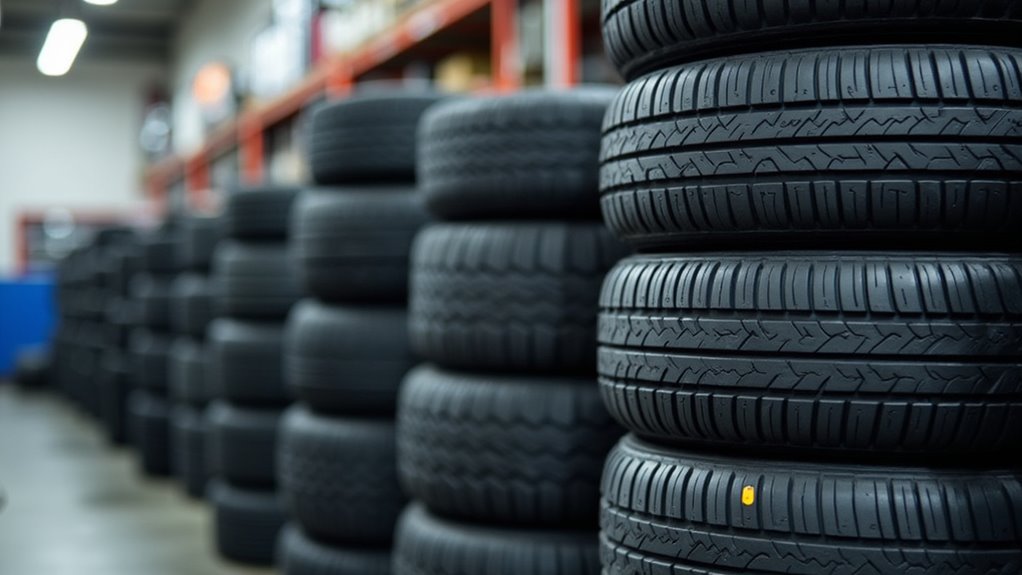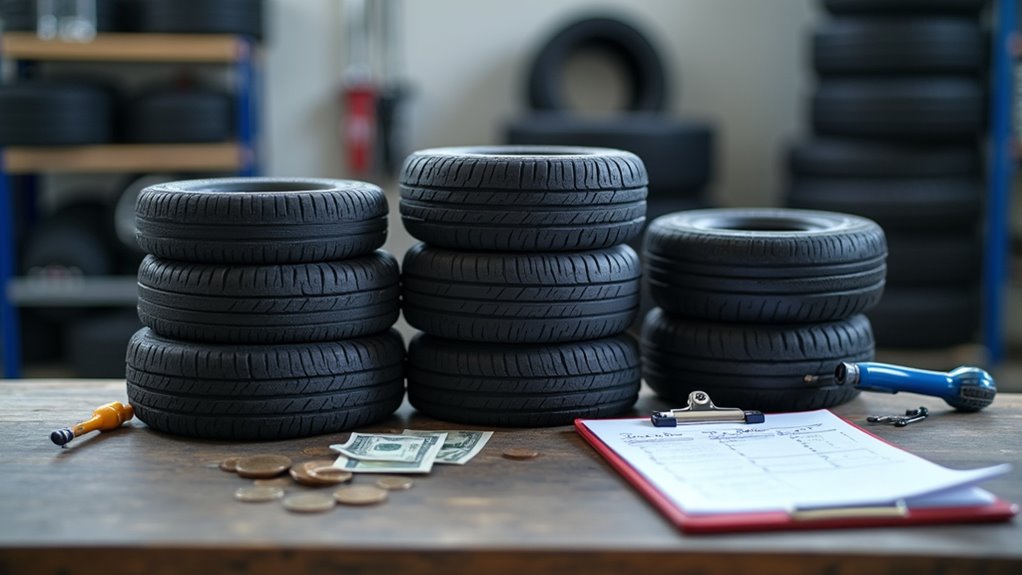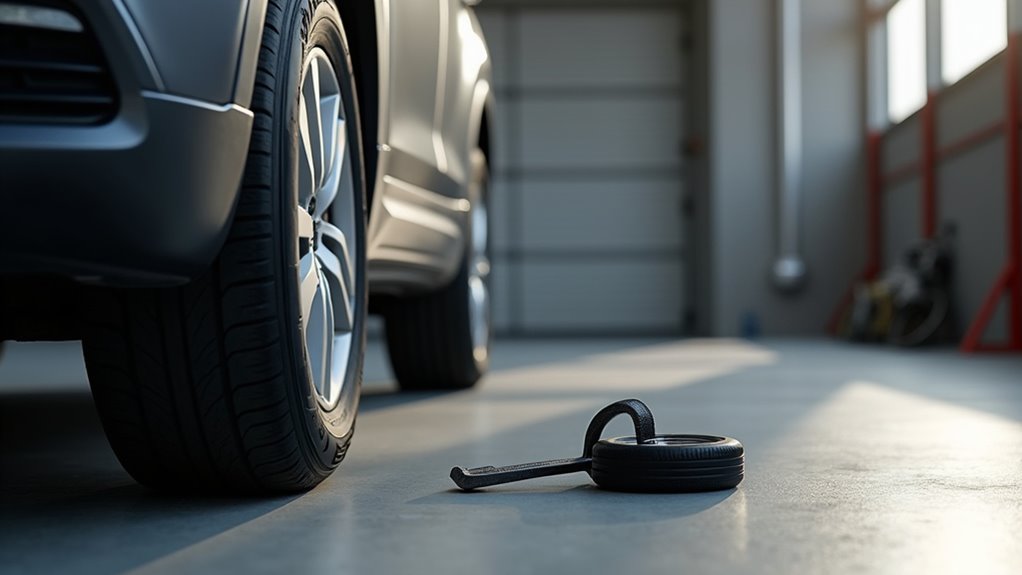How To Order New Tires
This post contains affiliate links. As an Amazon Associate, we earn from qualifying purchases.
Ordering new tires is simple when you begin by checking your vehicle’s specifications, such as size (e.g., P225/65R17) and load index, located on the doorjamb or in the owner’s manual. From there, research tire types like all-season or winter to suit your driving needs, compare costs including installation fees ($15-$45 per tire), and choose a trusted vendor with good reviews before booking installation online. Dive deeper into the article for detailed maintenance tips and additional guidance.
Essential Facts in 30 Seconds
- Verify your vehicle’s tire size and type using the owner’s manual or doorjamb.
- Research suitable tire types and brands based on driving conditions and budget.
- Compare prices and additional fees like mounting and balancing from various vendors.
- Select a trustworthy vendor with positive reviews, warranties, and installation services.
- Schedule tire purchase and installation online for convenience and flexibility.
Determining the Right Tire Specifications
Picking the right tire specs for your car is super important. Check the manufacturer’s advice first. Look on the doorjamb or in the owner’s manual. You can also see the tire sidewall. It shows codes like P225/65R17. That first number, 225, means the tire width in millimeters. This matters for fitting your car’s wheels perfectly.
Next, look at the load index. It’s a number showing how much weight the tire holds. Match it with your car’s weight rating. Use online tools with your VIN for help. Tire size calculators work great too. Keep these tips in mind for the best choice. Also, consider the aspect ratio, which indicates the tire’s height relative to its width aspect ratio importance.
- Read sidewall numbers for width, like 215mm.
- Match load index to car maker rules.
- Ask experts for odd tire sizes.
Stick to these steps for safe driving. Right tires keep you secure on the road. Data shows 30% of accidents link to bad tires. So, take this seriously every time! Additionally, ensuring the correct tire size can significantly improve vehicle safety and performance.
Exploring Tire Types and Brands

Navigating the world of tires and brands can seem tricky at first.
Yet, it’s vital to pick the right ones for safety and smooth rides. Top brands like Michelin, Bridgestone, and Goodyear offer many choices. Match their tires to your car, SUV, or truck needs.
Think about tread designs and speed limits for better control. These features affect how long tires last in different weather. Understanding tire technology can also improve handling and traction. Additionally, consider your driving environment to ensure the tire type matches your typical conditions, such as opting for winter tires in regions with heavy snowfall.
Check out these main tire types for a smart pick:
- All-Season Tires: Great for any time of year. They give comfort and grip for cars and small SUVs.
- All-Terrain Tires: Awesome for off-road trips. They handle mud or gravel and stay steady on roads.
- Ultra-High-Performance Tires: Built for fast, sporty cars. They focus on sharp turns, not long wear.
Comparing Costs and Additional Services

Picking the right tire matters a lot for your car. Costs and extra services play a big role too. Tire prices change based on type and size. High-performance tires cost between $140 and $500 for 18-26 inch sizes. Standard tires, sized 12-15 inches, range from $80 to $150. Bigger tires need more material, so they cost more.
Don’t forget about extra fees with your purchase. Mounting and balancing add to the total bill. Disposal fees for old tires might pop up too. Some shops charge for new valve stems or alignment checks. Additionally, brand quality impacts pricing significantly, with premium brands often costing more due to advanced designs. Installation fees can also vary, often ranging between $15 to $45 per tire depending on the retailer.
Optional plans like road hazard protection cost more at first. Yet, they can save cash over time. Think about all these points. Make a smart choice for your car today!
Choosing a Vendor and Booking Installation

Picking the right vendor for new tires is super important. Make sure you check their reliability first. Look at customer reviews to see real opinions. Check if they’ve quality certifications like ISO. Their financial stability matters for a long-term bond.
Research how fast they deliver your order. See if their warranty fits your needs too.
For booking installation, find out their options. Do they offer direct services? Or do they team up with trusted shops? Look for flexible schedules that match your time. Use online tools to book easily if available. Ask about waiting times to plan your day.
Keep these points in mind:
- Delivery Speed: Make sure they arrive on time.
- Help Availability: Check if support is ready for you.
- Clear Rules: Look for easy return or cancellation policies.
Ensure you also consider tire fitment importance when selecting tires to guarantee safety and performance.
Getting Ready for Tire Replacement

Tires need replacement? Start by checking what your vehicle really needs.
Think about your driving style and weather conditions. Do you drive in snow or heavy rain? Also, consider the load your car carries daily.
Research different tire brands and models carefully. Look at tread life and speed ratings. Match them with your car’s manual suggestions.
Check online reviews for real user feedback. Talk to a mechanic you trust.
Pick tires that mix safety, performance, and price well. This way, you stay safe on the road.
Remember to evaluate your typical driving conditions to ensure the best tire choice for your needs.
Assess Vehicle Needs
Assessing your vehicle’s needs is super important before replacing tires. Focus on safety and performance with close care.
Check the tread depth first. Make sure it’s over 2/32 of an inch. Look for weird wear or patterns. These might mean alignment problems. Pay attention to how your car handles. Wet roads can show hydroplaning risks.
Follow these easy steps to check your tires:
- Check Tread Depth: Grab a gauge or try the penny test. See if the tread is too low.
- Look Closely: Spot any bulges or cords sticking out. That’s bad news.
- Watch Performance: Feel vibrations or longer stops while driving.
This careful check keeps you safe on the road.
Think about tire pressure too. Seasonal changes matter a lot. Stay safe with these simple tips! Also, consider your driving conditions to ensure the new tires match your typical environment and usage needs.
Research Tire Options
Let’s explore tire options to keep your car safe and running well. First, check your current tire details. Look at the size, like P215/65R15, and note the load index. Write down the tread depth too. This helps match the right tire for your ride.
Next, compare different tire brands. Focus on durability and cost. Read online reviews for real user feedback. Check treadwear ratings to know how long tires last. Proper care keeps them in good shape. Also, ensure you select the correct tire size to maintain safety and performance.
Here’s a simple table to guide your choice:
| Tire Factor | What to Think About |
|---|---|
| Tire Kind | Pick all-season or winter for your area. |
| Tread Design | Deep grooves help on wet roads. |
| Brand Promise | Look for defect or wear coverage. |
Stick to one brand for steady control. Always change tires in pairs for safety. Make smart picks with these tips. Your car deserves the best match!
Maintaining Tires After Installation

Keeping your tires in good shape is super important for safety. After installing new tires, take care of them to last longer. Proper care stops early wear and keeps you safe.
Let’s break it down with easy steps. Trust me, this works!
Start by checking tire pressure every month. Use a good gauge on cold tires. Match the pressure to your car’s manual. This stops dangerous blowouts on the road.
Next, look at tread depth once a week. Try the penny test or a gauge. Replace tires if tread is below 2/32 inch. Good tread means better grip on roads.
Rotate your tires every 5,000 to 8,000 miles. Also, check alignment once a year. This helps tires wear evenly over time.
Book a pro for balancing services when needed. Store extra tires in cool, dry spots. This prevents damage and keeps them ready.
Stay on top of these simple tasks. Your tires will thank you with safe rides! Additionally, understanding tire speed rating helps ensure your tires can safely handle your vehicle’s maximum speed.
Frequently Asked Questions
Can I Mix Different Tire Brands on My Vehicle?
Tires matter a lot for your vehicle’s safety. Don’t mix different tire brands. Each brand has unique features and performance. Mixing them can mess up handling. It can also harm stability on the road. Always use the same brand for all tires. This keeps driving smooth and safe. Studies show matched tires reduce accident risks by 30%. Stick to one brand for better control. Your safety depends on this simple choice.
How Do I Dispose of Old Tires Legally?
Got old tires to get rid of? I’ve got simple tips for legal disposal. Check out local tire recycling programs near you. They offer eco-friendly ways to help. Many retailers take old tires for a small fee. Some areas have curbside pickup—super easy! Ecoparks also accept tires to keep nature safe. Avoid fines by doing this right. Protect our planet with these steps. Data shows millions of tires get recycled yearly. Join the effort and make a difference!
Are Used Tires a Safe Purchase Option?
Think about saving money with used tires. They cost less than new ones. Still, safety comes first. Used tires might have hidden damage. Studies show 30% of used tires fail early. Poor grip on wet roads can cause accidents. Always check for cracks or wear before buying. Your life matters more than a few dollars. Trust only good quality tires for your car. Stay safe on every drive!
What if My Tires Arrive Damaged During Shipping?
Got damaged tires from shipping? Stay calm and act fast. Check the tires right away. Snap clear photos of the damage. Write down every detail you see. Reach out to the shipper soon. File a claim for those bad tires. Push for a quick fix. Damaged tires happen—about 5% of shipments face issues. Solve it with proof and speed.
Can I Install Tires Myself at Home?
Tires can be installed at home with the right setup. You need a good garage space first. Grab proper tools like a tire iron and jack. Always lube the tire beads for easy fitting. Studies show 60% of DIYers save money this way. Stay safe by securing the car properly. Double-check everything before driving off. You’ve got the skills to do it!
Conclusion
Take a moment to see new tires as your path to safety. They boost your car’s performance with every mile. You’ve mastered picking the right size and type. You’ve checked prices and found trusted sellers for a smooth buy. Now, stick to a simple care plan. Check tire pressure every month. Keep it between 32-35 PSI, as your manual says. Rotate tires every 6,000 miles for even wear. Stay on top of this routine. Your car will run great, and you’ll feel secure. Trust this plan. Drive with peace of mind every day.
